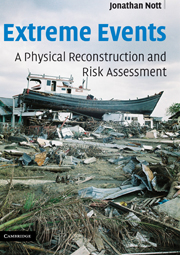9 - Asteroids
Published online by Cambridge University Press: 18 December 2009
Summary
The Titius–Bode rule states that the radii of the planetary orbits in our solar system increase geometrically with increasing distance from the Sun. This rule suggests that there is a planetary gap between Mars and Jupiter (Encrenaz et al., 1990), or in other words that a planet should have once existed here. On the 1st January 1801, the missing planet was discovered by Italian astronomer Giuseppe Piazzi. He named it Ceres (Jones, 1999). It was soon discovered though that Ceres was not a planet as it is too small; Ceres is a minor planet or what is now known as an asteroid. Over the following years a number of other asteroids were discovered in the gap between Mars and Jupiter. This gap is now called ‘the main asteroid belt’ (Encrenaz et al., 1990).
The word asteroid means ‘resembling a star’ (Jones, 1999). They are metallic, rocky bodies without atmospheres that orbit the Sun. They are too small to be classified as planets, hence the name ‘minor planets’. They are largely confined to the main ‘doughnut-shaped ring’ asteroid belt between Mars and Jupiter from approximately 2 to 4 AU (AU = Astronomical Unit which is the distance from the Sun to the Earth and in this case 2–4 AU = 300–600 million km) (Jones, 1999; NASA, 2004). Tens of thousands of asteroids congregate in the main asteroid belt, but not all are confined to this belt for some pass much closer to the Earth; these are known as the near-Earth asteroids (Jones, 1999).
- Type
- Chapter
- Information
- Extreme EventsA Physical Reconstruction and Risk Assessment, pp. 222 - 250Publisher: Cambridge University PressPrint publication year: 2006



